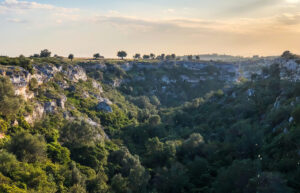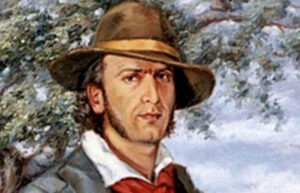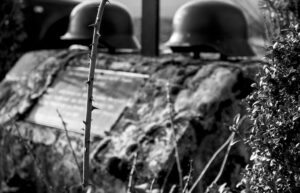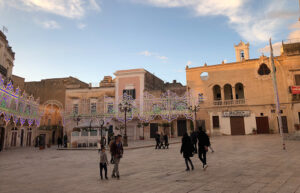Grottaglie: City of Art, Ceramics and Grapes
Κρυπταλύς
The word ‘Grottaglie’ comes from the Latin Kriptalys and the Greek Κρυπταλύς, a name that underlines the presence of caves (krypta, κρύπτα) that significantly characterize the city.
Walking through Grottaglie you will be inebriated by the smells of a city rich in art and culture, typical of ancient villages, but also of a dense vegetation composed of thyme, mauve and thistles.
The territory
Winter in Grottaglie are mild while summers are often hot and humid, reflecting a typically Mediterranean climate. The rainfall is not very abundant but, in the rainiest seasons, it is possible to observe one of the peculiarity beauties of this territory: the creation of the only natural waterfall in Puglia inside the Gravina di Riggio.
Usually the karstic rocks of the gravine absorb the water and carry it in the meanders of the earth, while in the case of Riggio the water gives Grottaglie a real enchanted place where nature and biodiversity become one with the works of man.

The History
 Palaeolithic age – 9th century AC
Palaeolithic age – 9th century AC  4th – 3rd century AC
4th – 3rd century AC  Middle Age – 11th century BC
Middle Age – 11th century BC  15th – 17th century BC
15th – 17th century BC  18th century BC
18th century BC  Second postwar period
Second postwar period  Grottaglie Today
Grottaglie Today Palaeolithic age – 9th century AC
Since the Palaeolithic age, man and cattle have lived in the Grottaglie’s caves, rich in natural ravines where they could find shelter, water and flora necessary to provide food for the pets and to ensure their survival. When the Saracens attacked southern Italy, many people fled and took refuge in the caves of this territory, giving life in a short time to an urban center.
4th – 3rd century AC
With the arrival of the Romans in the village they began to build canals and aqueducts, which guaranteed important benefits to the community. Later, however, the fall of the Roman Empire and the subsequent barbarian incursions led Grottaglie to go through a period of economic and social difficulties.
Middle Age – 11th century BC
This is recovery period for the town. Normans decided to donate the “Casale Cryptalearum” and all its goods to the Archiepiscopal Canteen of Taranto, starting a large economic cycle and strongly linking the social, political and religious life conditions of the town to the Taranto archbishops.
The archbishopric played a role of fundamental importance for Grottaglie leading to the creation of one of the most important historical buildings in the city: the Collegiate Church of Maria Ss.ma Annunziata, called by the people of Grottaglie “ Mother Church“.
15th – 17th century BC
Difficulties and political crises led to a “cohabitation” of two different feudal jurisdictions: a bishopric and a lay one. This bond weighed negatively during the Bourbon reign due to the numerous power struggles between bishops and lay feudal lords who dragged the village down to the abolition of feudalism.
18th century BC
In the years of the Risorgimento, the caves once again became a source of refuge for brigands, turning the village into one of the main centres of the phenomenon of brigandage. Famous, in fact, is the Caverna del brigante Ciro Annicchiarico (famous brigante born in Grottaglie and called in dialect “Papa Ggiro“). This period led to a first urban expansion of the city of Grottaglie but also to an immense loss from an artistic point of view: with the unification of Italy in fact the immense historical heritage of Grottaglie was destroyed.
SOURCE: image from www.brindisiweb.it/
Second postwar period
Grottaglie resumed a real growth and economic stability, focusing mainly on ceramics and agriculture, which has allowed it to be recognized today as the “City of Ceramics” or the “City of Grapes”.
Grottaglie Today
Grottaglie today is a city rich in museums, churches and various works of ceramics which make it appreciated from a cultural point of view. It is also able to offer the enhancement of the typical products of the agro-food sector and a really suggestive way to admire the wonderful landscape of the Salento hinterland through long walks, trekking and excursions.


